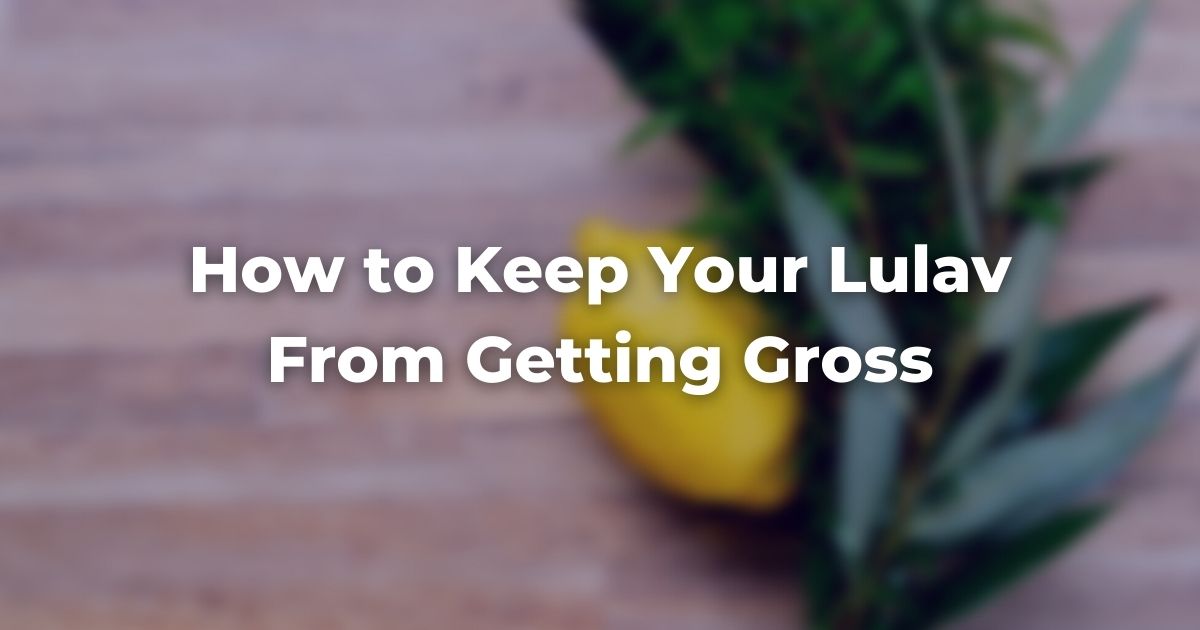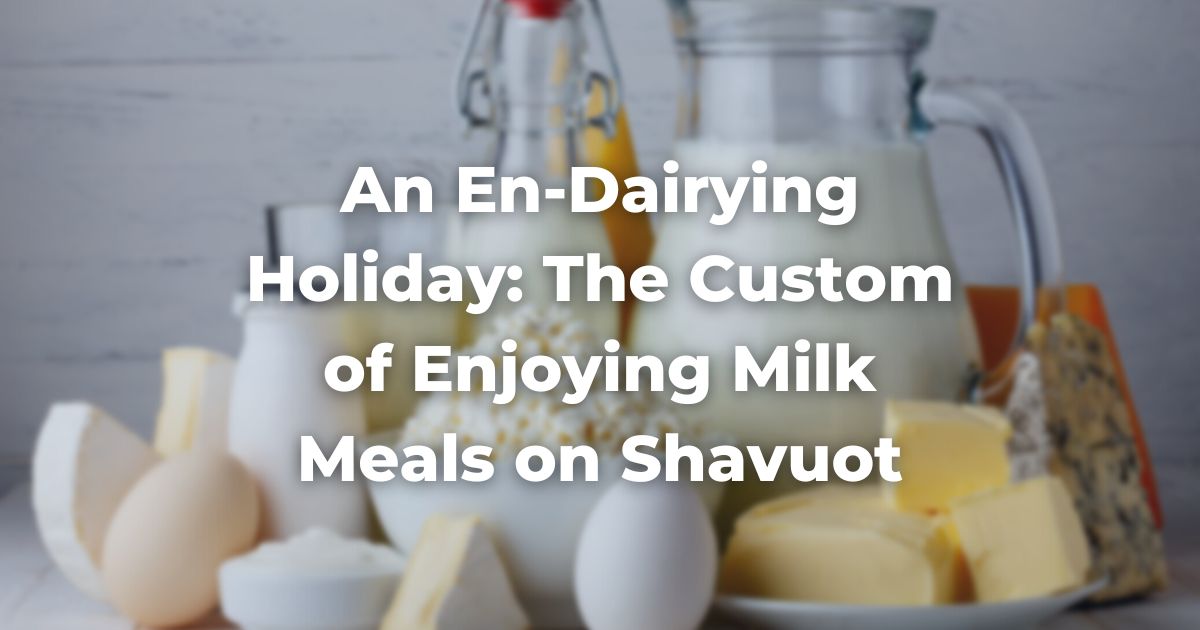There is nothing more frustrating than finding your lulav and etrog moldy after only a few days of the holiday. But this doesn’t have to happen!
How to Take Care of Your Lulav and Etrog
Lulavim and Etrogim, like all perishables, need to be kept in a cool place and treated gently. I recommend the following procedures for each of your four species:
Lulav
Do not keep your Lulav in plastic. The combination of heat and humidity will cause your Lulav to mold.
If you have a Succah, keep it in your Succah in a place where it will not get wet or rained on. If you don’t have a Succah, keep it in a cool spot. You may use a damp towel, see ‘Stage 2’ below for dampening instructions if you fear that your Lulav is drying out.
Etrog
The Etrog, like all citrus fruit, can last some time out of the fridge; in fact, it will probably be better off.
I like to leave mine in the box with the fancy cushion.
I also leave it on a high shelf away from little children. If your Etrog is damaged, it may no longer be kosher. If it starts to brown, it may be placed in the fridge to slow down the rotting process (fruit doesn’t ‘ripen’ once picked.)
Hadasim and Aravot – Two Stages of Preservation
Stage 1
The hadas (myrtle) and arava (willow) are the two most sensitive parts of your four species. Physically, not spiritually.
Since the first time you will need either of them is on the first day of the holiday (unless it is Shabbat because we don’t shake the Four Species on Shabbat), I recommend cutting off the bottom of the bag and placing them on the top shelf of your refrigerator.
Why the bottom of the bag?
Because if you damage the bottom leaves the hadas and arava will not be rendered un-kosher, whereas any damage to the top will render them unusable. Also when you remove them by pulling them from the stem on the bottom are less likely to remove leaves than by pulling them in such a way as causing the leaves to bend backwards.
Why the top shelf?
The top shelf is not as cold as the bottom, and freezing can render them un-kosher. Also, on the top shelf, they are less likely to have a big pot of soup dropped on them.
Stage 2
Once you have used your lulav, hadasim, and aravot on the first day, you will want to keep them damp but not wet.
If you can remove the Lulav and put the aravot and hadasim back in the fridge, you will be in good shape. Even there, they should be wrapped in a moist but not damp towel.
I like to wet my fingers and sprinkle water on the towel, never putting it under water or getting it so wet that it must be wrung out (this is prohibited on Yom Tov and Shabbat).
Author
-

Rabbi Mordechai Rackover serves as Editor in Chief of Exploring Judaism and Director of Publications and Digital Engagement at The Rabbinical Assembly. He has a background in education, campus work, and the pulpit. Mordechai studied for nearly a decade in a number of Yeshivot in Israel and has a BA in Jewish Studies from McGill University and an MA in Jewish Communal Leadership from Brandeis University. When not working he can be found reading or cooking and occasionally catering. Check out his Instagram for mouthwatering shots.
View all posts






